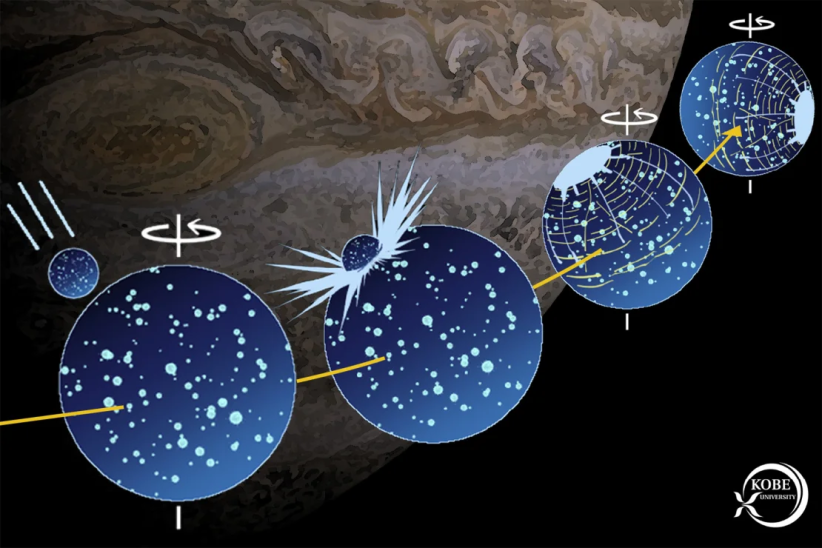Ganymede is the subject of extensive research for scientists on Earth, as beneath the ice sheet is thought to be a large salty ocean
Jupiter’s moon Ganymede likely changed its orbit when a massive asteroid “crashed into it” about 4 billion years ago, according to new research.
Ganymede, the largest moon in our solar system, is even larger than both Mercury and the dwarf planet Pluto.
Previous research, according to CNN, has found evidence suggesting that beneath Ganymede’s thick, icy crust lies a salty ocean that is 10 times deeper than Earth’s oceans.
However, many questions remain about this particular moon, and scientists need more high-resolution images of its surface to solve the mysteries surrounding Ganymede’s history and evolution.
“Jupiter’s moons Io, Europa, Ganymede and Callisto all have interesting individual features, but what caught my attention were these grooves on Ganymede,” said Naoyuki Hirata, assistant professor of planetary science at Kobe University in Japan. “We know this feature was created by an asteroid impact about 4 billion years ago, but we weren’t sure how big that impact was and what effect it had on the moon.”
Hirata is the author of a new study, published Tuesday in the journal Scientific Reports, that explores what created Ganymede’s crater system and the consequences of the impact, which could be studied more closely by the European Space Agency’s Juice spacecraft , which is currently en route to study Jupiter and its moons.
The collision was so great that Ganymede changed course
Hirata noticed that the center point of the groove was along the spin axis of the moon Ganymede, implying that something like a large impact event caused the moon to completely reorient itself.
Previous research has shown that a large planetary body collided with Pluto early in its history, which caused a rearrangement of the ice distribution on the dwarf planet and led to the creation of a characteristic “heart” shape on the planet’s surface.
Hirata believes a similar scenario happened to Ganymede.
The asteroid was 20 times larger than the one that wiped out the dinosaurs
A sudden change in the way mass is distributed on a planet can shift the position of its axis, or the imaginary line around which planetary bodies rotate. When a large asteroid hits a planet, it creates a gravitational anomaly that changes the way it rotates. So Hirata calculated what kind of collision Ganymede’s current orientation could have created.
His equations revealed that an asteroid about 186 miles (300 km) wide initially created a crater about 870 to 994 miles (1,400 to 1,600 km) in diameter.
The asteroid was 20 times larger than the one that collided with the present-day Yucatán Peninsula in Chicxulub, Mexico, and led to the extinction of the dinosaurs on Earth 66 million years ago. The crater left behind on Ganymede was 25% the size of Jupiter’s moon, according to the study.
Source :Skai
I am Terrance Carlson, author at News Bulletin 247. I mostly cover technology news and I have been working in this field for a long time. I have a lot of experience and I am highly knowledgeable in this area. I am a very reliable source of information and I always make sure to provide accurate news to my readers.











